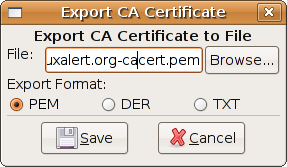In the enterprise world
Except from having a terrible cold this week I have been at two seminaries.
The first one was Red Hat and JBoss Value² Tour. Red Hat clearly show that they have entered into the offices of managers, CEOs, CIOs, VPs etc. They also show that they want to lock you in as any other vendor, but they can defend themself that at least the source is open. From a commercial and organizational perspective I think they do one important thing wrong. They are still not shipping proprietary drivers such as wireless, graphic cards, codecs etc. This means that as a system manager one must still handle these things to give the users a pleasant drive on the desktop. Here is an area where other providers such as Suse and also Ubuntu have done a tremendous job. On the other hand Suse trie to lock us in with Yast, even if it is open source, which makes it harder to manage from central point. Ubuntu on the other hand lack of kerberos/ldap/AD integration in main, which is a demand in many organizations.
Red Hat, like Novell, constantly talk about the better quality etc of the Enterprise editions than of the community editions. Here is where I have a big problem. This is not true; there are no quality differences. What Red Hat and Novell are selling is security. Not security in the perspective of computer security but security in the perspective of the managers being comfortable with their environment. Unfortunately, they are not willing to confirm this and instead throw FUD on the community distributions. This irritates me as an open source person. Managers are used to deal with a supplier that invites them to seminaries, dinners, and visits them to get them to feel that they are valuable. When we technicians point this out no one will accept it. The problem is not that they want to buy the enterprise distributions, but that they do not know why they are doing it.
Anyway, it is better that they select Linux instead of Windows or commercial Unixes.
The other seminar was a presentation from IBM about their blade solution. I got the "same" presentation from HP last fall. It is not easy to determine who is best or fits my needs best. Someone is better than the other in some points and vice versa. The two most interesting things were SAN over infiniband and local disk based on flash. The infiniband solution gives the possibility to stack several blade racks and use one common fibre channel switch out. The local flash disk is 4GB which is enough for the system disk. If you do not want to use a SAN for some reason you can have your system on a local disc and access your data via NAS (NFS or SMB). Why a flash disk instead of a normal disk? No moving parts and less power consumption is the easy answer.
IBM and HP, please start to certify your hardware for Ubuntu.
The first one was Red Hat and JBoss Value² Tour. Red Hat clearly show that they have entered into the offices of managers, CEOs, CIOs, VPs etc. They also show that they want to lock you in as any other vendor, but they can defend themself that at least the source is open. From a commercial and organizational perspective I think they do one important thing wrong. They are still not shipping proprietary drivers such as wireless, graphic cards, codecs etc. This means that as a system manager one must still handle these things to give the users a pleasant drive on the desktop. Here is an area where other providers such as Suse and also Ubuntu have done a tremendous job. On the other hand Suse trie to lock us in with Yast, even if it is open source, which makes it harder to manage from central point. Ubuntu on the other hand lack of kerberos/ldap/AD integration in main, which is a demand in many organizations.
Red Hat, like Novell, constantly talk about the better quality etc of the Enterprise editions than of the community editions. Here is where I have a big problem. This is not true; there are no quality differences. What Red Hat and Novell are selling is security. Not security in the perspective of computer security but security in the perspective of the managers being comfortable with their environment. Unfortunately, they are not willing to confirm this and instead throw FUD on the community distributions. This irritates me as an open source person. Managers are used to deal with a supplier that invites them to seminaries, dinners, and visits them to get them to feel that they are valuable. When we technicians point this out no one will accept it. The problem is not that they want to buy the enterprise distributions, but that they do not know why they are doing it.
Anyway, it is better that they select Linux instead of Windows or commercial Unixes.
The other seminar was a presentation from IBM about their blade solution. I got the "same" presentation from HP last fall. It is not easy to determine who is best or fits my needs best. Someone is better than the other in some points and vice versa. The two most interesting things were SAN over infiniband and local disk based on flash. The infiniband solution gives the possibility to stack several blade racks and use one common fibre channel switch out. The local flash disk is 4GB which is enough for the system disk. If you do not want to use a SAN for some reason you can have your system on a local disc and access your data via NAS (NFS or SMB). Why a flash disk instead of a normal disk? No moving parts and less power consumption is the easy answer.
IBM and HP, please start to certify your hardware for Ubuntu.


Comments